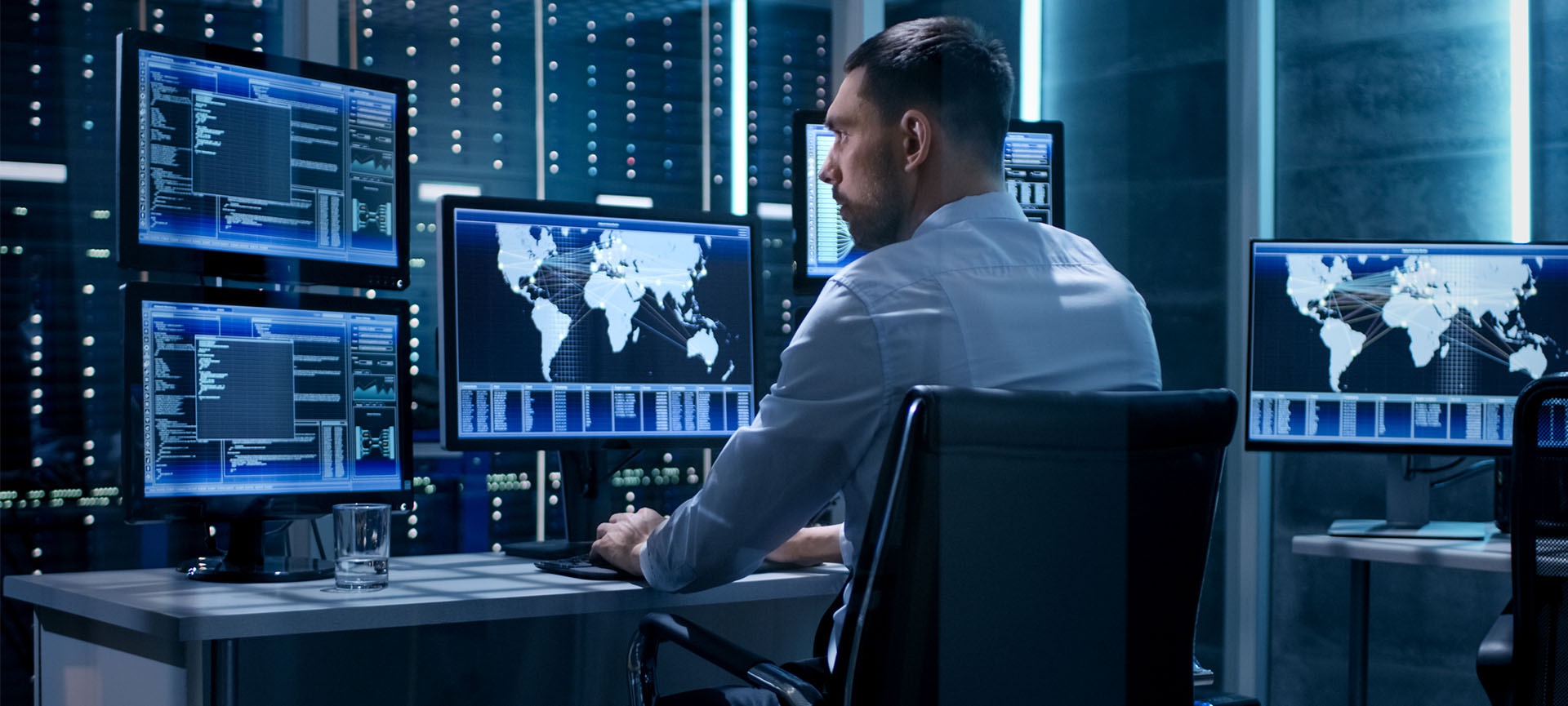Mastering Corporate Security: Proven Tips for Company Security
Mastering Corporate Security: Proven Tips for Company Security
Blog Article
From Cybersecurity to Physical Steps: Reinforcing Business Safety And Security in a Transforming World
In today's rapidly evolving electronic landscape, the importance of company safety can not be overemphasized. As cyber dangers end up being common and increasingly innovative, organizations have to go beyond typical cybersecurity measures to secure their procedures and assets - corporate security. This is where the combination of physical security steps comes to be important. By incorporating the strengths of both cybersecurity and physical safety, companies can produce a comprehensive protection strategy that resolves the diverse variety of hazards they face. In this discussion, we will discover the transforming risk landscape, the demand to integrate cybersecurity and physical safety and security, the implementation of multi-factor authentication procedures, the importance of employee awareness and training, and the adjustment of security procedures for remote labor forces. By examining these crucial locations, we will certainly obtain useful insights right into exactly how companies can strengthen their corporate safety in an ever-changing globe.
Comprehending the Altering Hazard Landscape
The progressing nature of the modern-day world requires a thorough understanding of the changing danger landscape for reliable corporate safety. It is crucial for organizations to stay notified and adjust their safety and security determines to address these developing hazards.
One trick facet of understanding the transforming risk landscape is acknowledging the various kinds of dangers that companies encounter. In addition, physical hazards such as burglary, criminal damage, and company reconnaissance remain prevalent concerns for companies.
Tracking and examining the danger landscape is essential in order to determine potential threats and susceptabilities. This involves staying updated on the most recent cybersecurity trends, analyzing danger intelligence reports, and carrying out regular threat analyses. By comprehending the changing threat landscape, companies can proactively execute appropriate safety and security measures to minimize threats and shield their assets, credibility, and stakeholders.
Integrating Cybersecurity and Physical Security
Incorporating cybersecurity and physical safety and security is essential for comprehensive company security in today's interconnected and digital landscape. As companies significantly count on technology and interconnected systems, the borders between physical and cyber hazards are coming to be obscured. To successfully guard against these dangers, an alternative method that incorporates both cybersecurity and physical safety actions is necessary.
Cybersecurity concentrates on shielding digital properties, such as systems, networks, and data, from unapproved access, disturbance, and theft. Physical protection, on the other hand, includes measures to protect physical properties, people, and centers from hazards and vulnerabilities. By incorporating these two domain names, companies can resolve vulnerabilities and dangers from both physical and digital angles, consequently enhancing their general safety pose.
The integration of these 2 self-controls permits a much more detailed understanding of safety risks and enables a unified reaction to occurrences. For instance, physical access controls can be boosted by integrating them with cybersecurity protocols, such as two-factor verification or biometric recognition. Likewise, cybersecurity actions can be complemented by physical security steps, such as surveillance cams, alarm systems, and protected accessibility points.

Implementing Multi-Factor Verification Actions
As companies increasingly prioritize thorough safety actions, one effective technique is the implementation of multi-factor authentication actions. Multi-factor authentication (MFA) is a security method that needs customers to provide several kinds of recognition to access a system or application. This method includes an added layer of protection by integrating something the customer understands, such as a password, with something they have, like a finger print or a safety and security token.
By executing MFA, companies can considerably boost their protection pose - corporate security. Standard password-based verification has its restrictions, as passwords can be conveniently compromised or forgotten. MFA reduces these dangers by adding an extra authentication element, making it a lot more hard for unauthorized individuals to gain access to sensitive info
There are a number of types of multi-factor verification techniques offered, including biometric authentication, SMS-based verification codes, and hardware tokens. Organizations need to assess their specific requirements and pick one of the most appropriate MFA service for their needs.
Nevertheless, the execution of MFA should be very carefully intended and executed. It is important to strike a balance between protection and usability to avoid user irritation and resistance. Organizations must likewise consider possible compatibility problems and supply sufficient training and support to guarantee a smooth change.
Enhancing Worker Awareness and Training
To strengthen company safety, organizations have to focus on improving employee recognition and training. In today's quickly evolving hazard landscape, workers play an important duty in securing a company's sensitive details and properties. Lots of security breaches take place due to human error or absence of awareness. Companies require to invest in extensive training programs to enlighten their staff members about prospective why not find out more threats and the finest techniques for alleviating them.
Efficient employee awareness and training programs must cover a wide variety of topics, consisting of information defense, phishing attacks, social engineering, password hygiene, and physical safety actions. These programs ought to be customized to the certain demands and responsibilities of various staff member roles within the organization. Routine recommended you read training workshops, sessions, and simulations can aid employees develop the essential abilities and understanding to recognize and respond to safety and security risks efficiently.
In addition, companies ought to encourage a society of safety awareness and give continuous updates and pointers to maintain workers notified about the current hazards and mitigation techniques. This can be done via interior interaction networks, such as e-newsletters, intranet websites, and email projects. By promoting a security-conscious workforce, companies can dramatically minimize the probability of safety cases and shield their beneficial properties from unapproved access or concession.

Adapting Security Measures for Remote Workforce
Adjusting company safety and security steps to fit a remote labor force is important in making certain the security of delicate details and properties (corporate security). With the raising pattern of remote work, organizations should carry out proper protection actions to minimize the threats connected with this brand-new means of functioning
One crucial aspect of adjusting protection measures for remote work is developing safe interaction networks. Encrypted messaging systems and virtual exclusive networks (VPNs) can aid secure delicate details and protect against unapproved gain access to. Furthermore, organizations should enforce the usage of solid passwords and multi-factor verification to improve the safety of remote gain access to.
One more essential consideration is the implementation of secure remote accessibility options. This includes offering workers with protected access to corporate resources and data through digital desktop infrastructure (VDI), remote desktop computer methods (RDP), or cloud-based remedies. These technologies ensure that delicate details stays secured while allowing employees to execute weblink their roles properly.

Lastly, detailed protection awareness training is important for remote staff members. Training sessions must cover ideal methods for firmly accessing and handling sensitive info, determining and reporting phishing efforts, and preserving the general cybersecurity health.
Final Thought
In verdict, as the danger landscape proceeds to develop, it is essential for companies to reinforce their protection gauges both in the cyber and physical domain names. Integrating cybersecurity and physical protection, implementing multi-factor authentication actions, and boosting employee recognition and training are essential actions in the direction of achieving durable corporate security.
In this conversation, we will discover the altering risk landscape, the need to incorporate cybersecurity and physical protection, the application of multi-factor authentication measures, the importance of staff member recognition and training, and the adjustment of protection procedures for remote workforces. Cybersecurity procedures can be matched by physical safety and security steps, such as monitoring video cameras, alarms, and protected access points.
As companies increasingly prioritize thorough security procedures, one effective technique is the execution of multi-factor authentication measures.In final thought, as the threat landscape proceeds to advance, it is essential for organizations to strengthen their protection gauges both in the cyber and physical domains. Integrating cybersecurity and physical security, carrying out multi-factor verification steps, and boosting staff member awareness and training are vital actions in the direction of attaining durable company safety and security.
Report this page